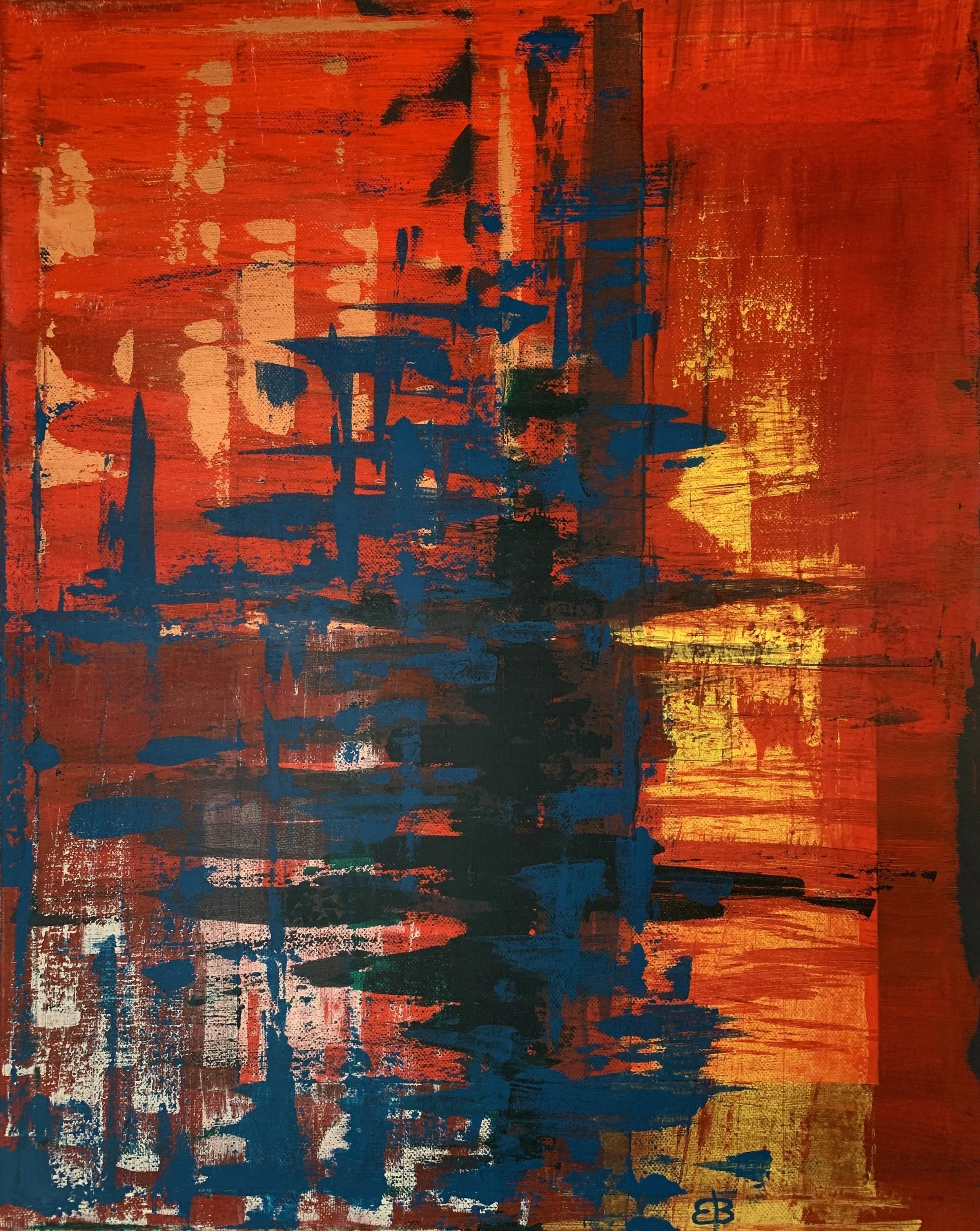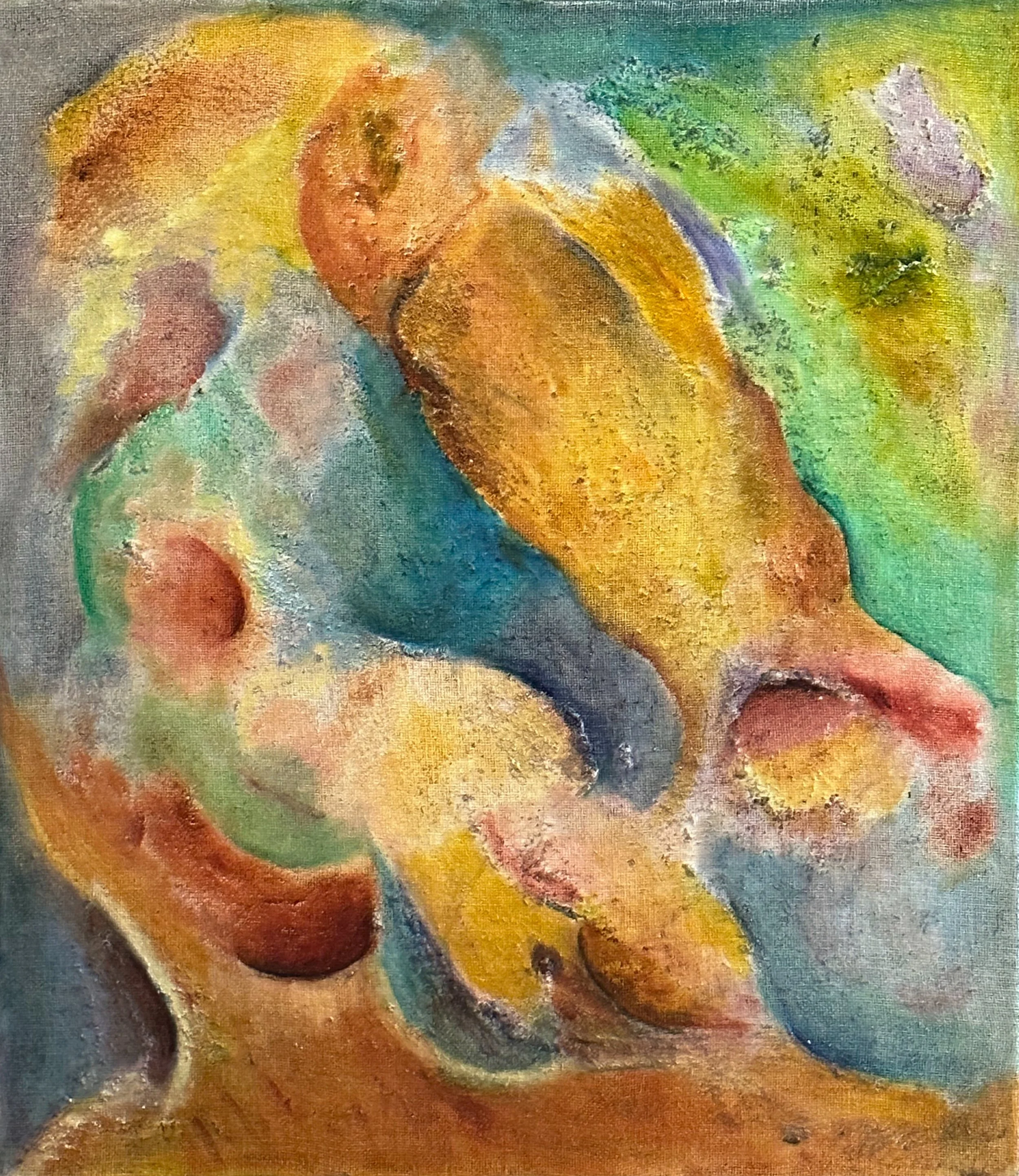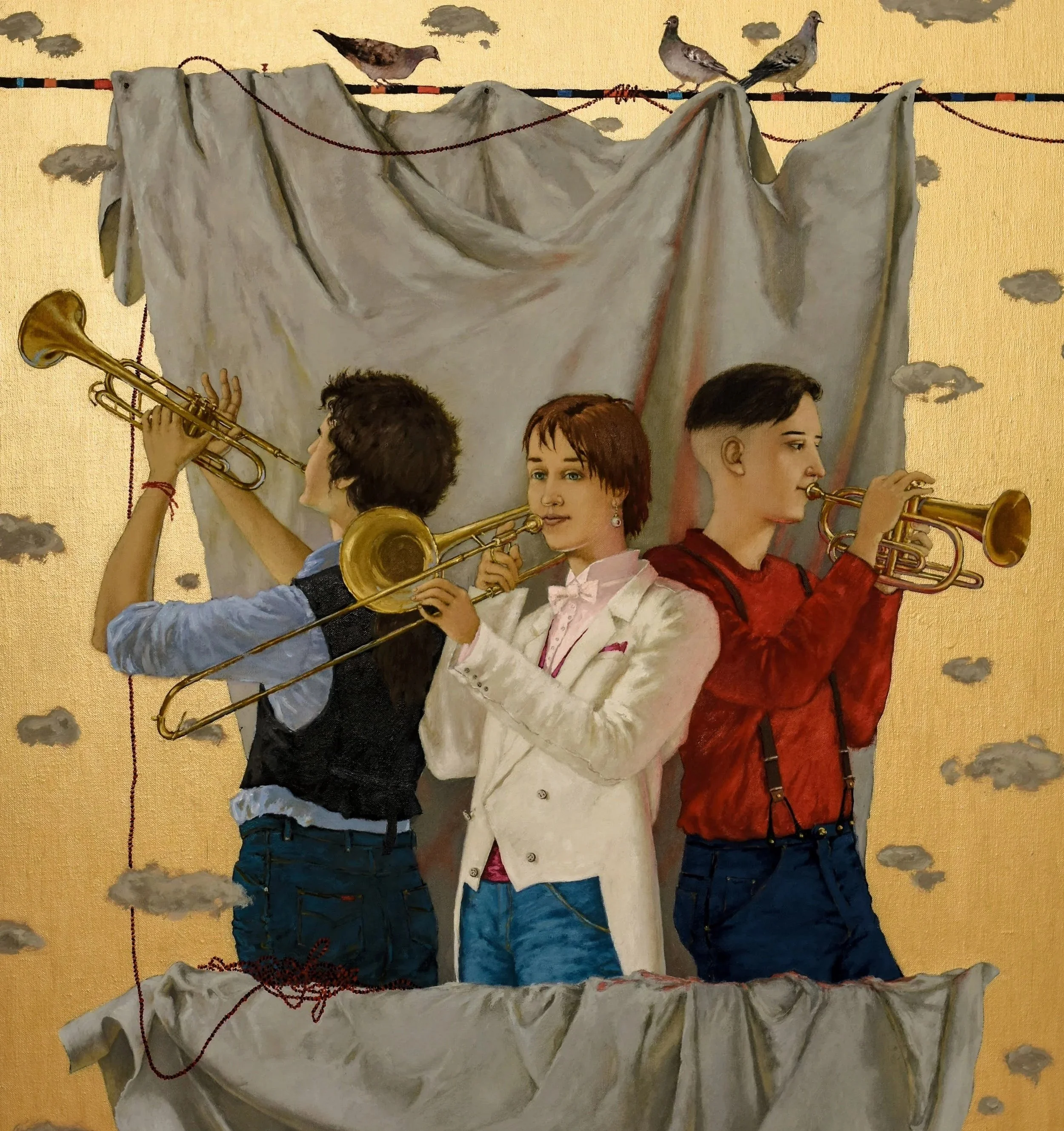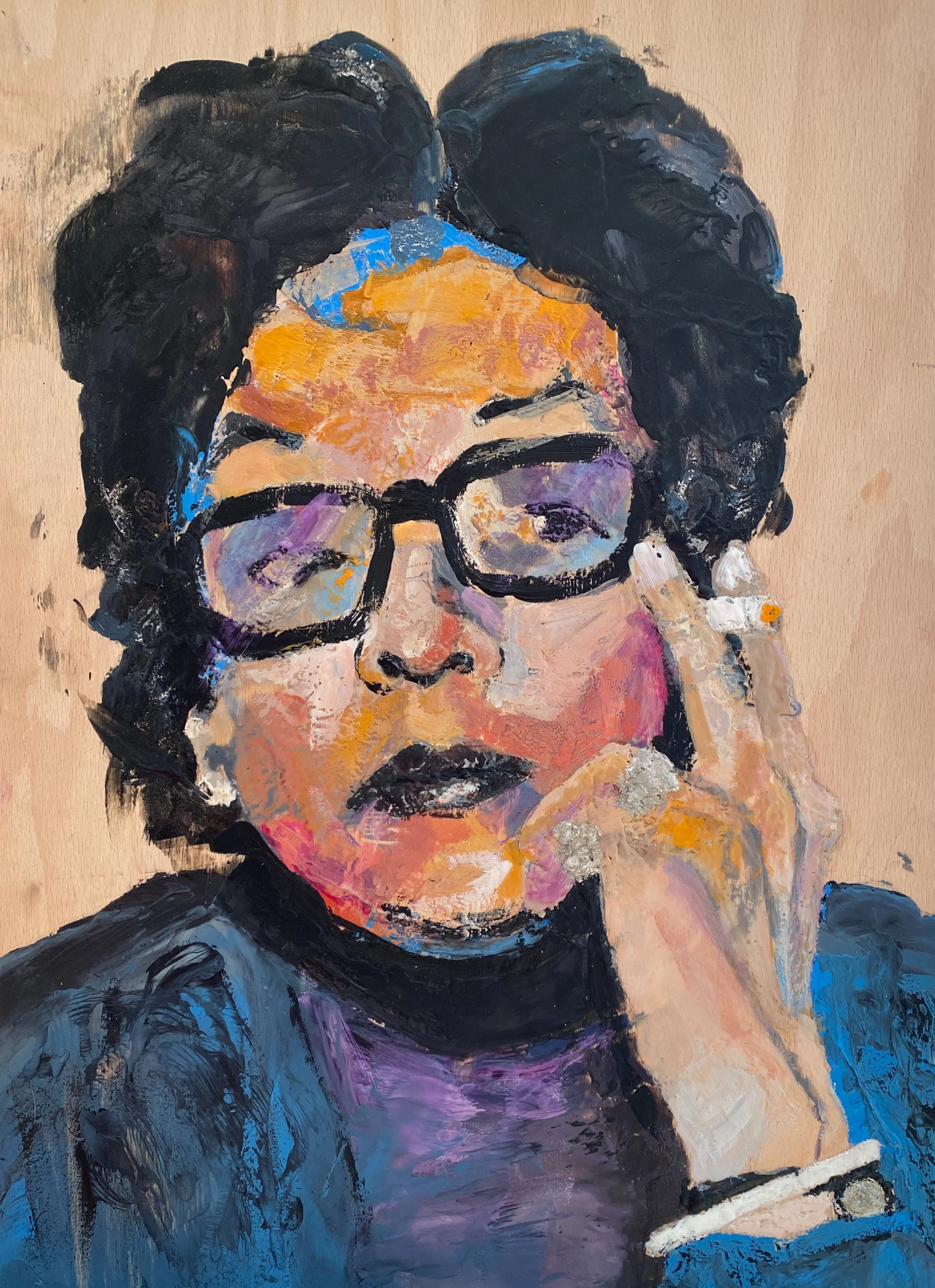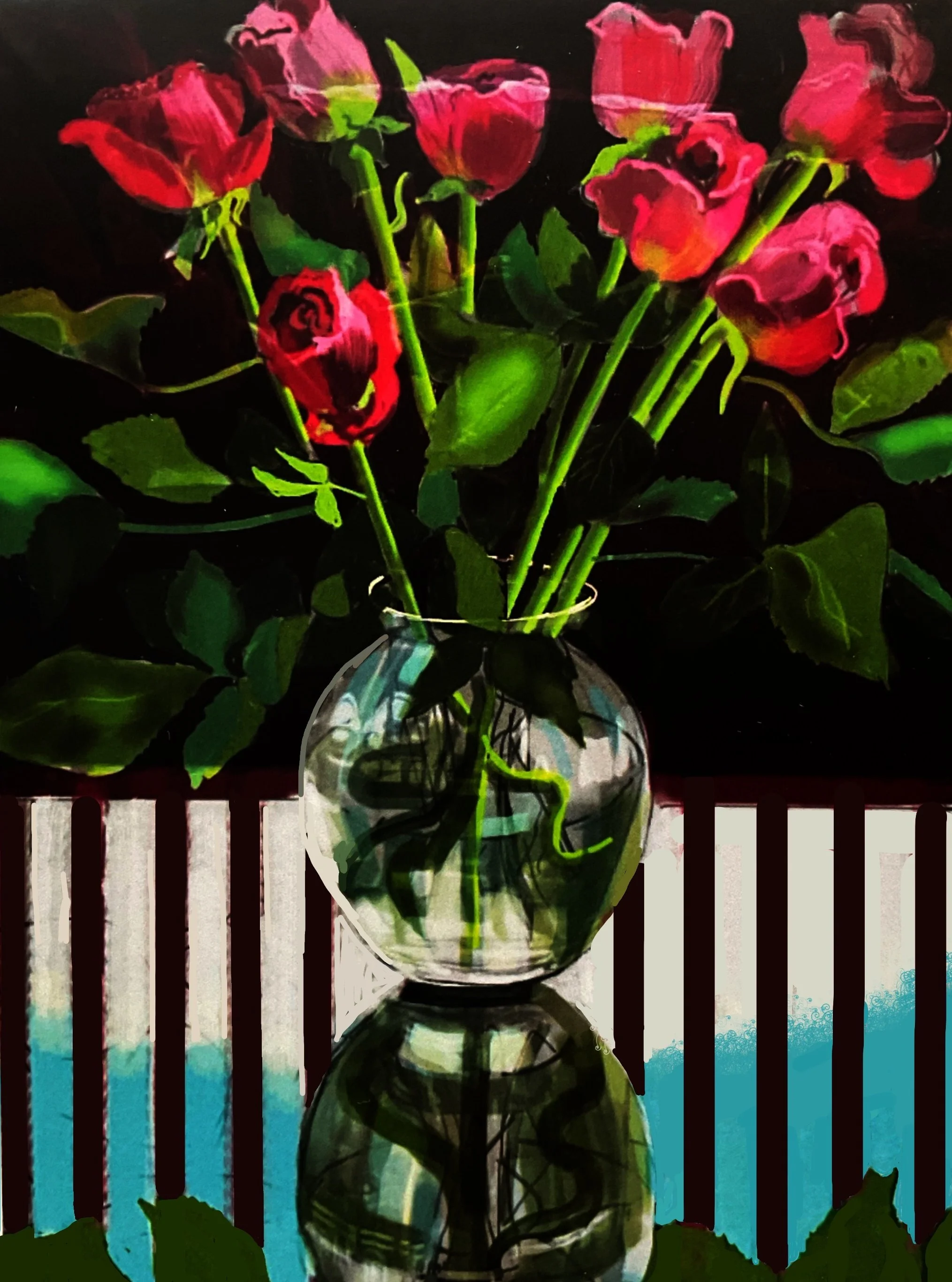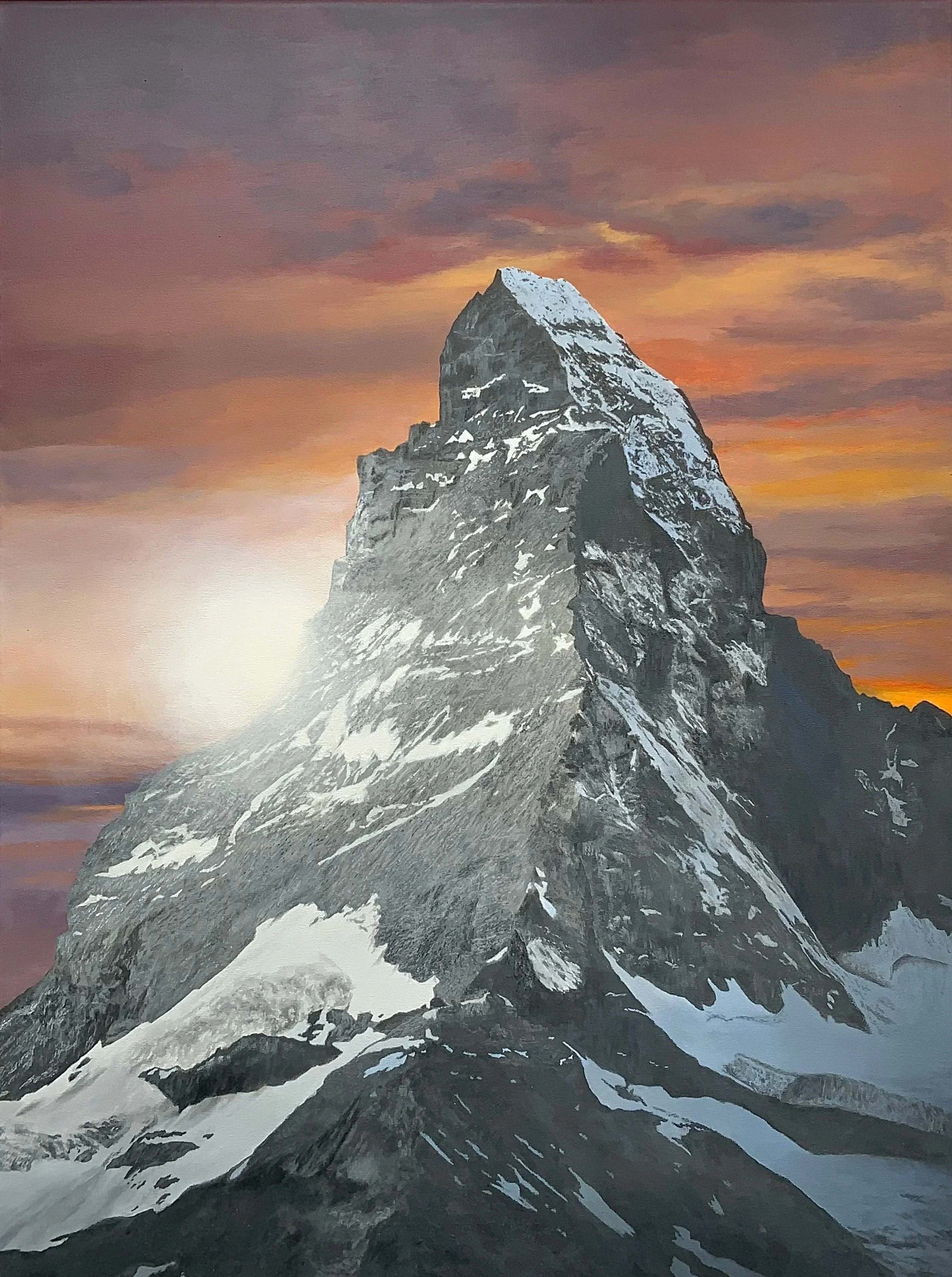Marcelle Mansour’s contribution to contemporary art extends beyond her technical achievements. Her oeuvre embodies a new model of artistic consciousness one that merges intellect with intuition, individual expression with universal message. In a cultural climate often dominated by irony and detachment, Mansour reasserts the sacred function of art: to restore wonder, to provoke reflection, to heal. Her work invites viewers to look beyond surfaces to perceive with what she calls “the third eye,” that inner faculty of vision capable of discerning the invisible truths beneath appearances.
All in Art Review
Susan N. McCollough
Susan N. McCollough’s art matters because it insists on freedom. Freedom not as chaos, but as disciplined openness to the unknown. Each canvas begins as a site of possibility, and through her labor of love, her brushstrokes, her colors, her embrace of space, it becomes a site of revelation. She reminds us that art is not about depicting what already exists, but about bringing into being what has not yet been seen.
Jeong-Ah Zhang
In the shifting constellation of contemporary art, Jeong-Ah Zhang emerges as a singular voice whose works transcend categorization. Though most often celebrated as a painter, her practice extends far beyond the canvas into photography, sculpture, and hybrid experiments that defy medium in pursuit of philosophical inquiry. Born in Seoul in 1966, Zhang’s life trajectory has been marked by a restless search for truth, a profound questioning of existence and non-existence, and a commitment to creating art that resonates beyond the surface of reality. Her oeuvre is a sustained meditation on breath, time, and the paradox of being, a space where visibility and invisibility coexist, where creation and extinction are not opposites but cyclical companions
Giora Carmi
To enter the recent work of Giora Carmi is to stand before a practice that is, at once, playful and deeply metaphysical. His paintings, executed in watercolor, gouache, pencil, and other intimate mediums, are not simply images placed upon paper. They are meditations made visible. They unfold as maps of inner states, constellations of color and line that seem to trace both the subconscious and the act of becoming conscious.
Elke Bügler
To enter the world of Elke Bügler is to encounter painting as both an act of surrender and of assertion. It is an art that begins in the void on the blank, unyielding surface of the canvas and moves forward not by premeditated strategy but through an unfolding dialogue between hand, pigment, and surface. Her approach resists linear narrative and predetermined form; it is, in her own words, “non-specific,” and yet this very refusal of the literal opens a field in which emotion, intuition, and thought may find their most direct articulation.
Barbara Palka Winek
Barbara Palka Winek occupies a singular place in contemporary art because she resists reduction. She is neither purely abstract nor purely figurative, neither wholly formalist nor narrative. Instead, she inhabits the in-between, the interstitial space where body dissolves into color, where cosmos enters form, where paint becomes both material and metaphysical.
Amartya
To stand before the canvases of Amartya (Joëlle Zioga) is to encounter a field where material facture dissolves into an atmosphere of apparition. In her “Blue Collection,” a body of work she confesses is closest to her heart, color is not merely pigment but ontology: a register of being that presses beyond the retinal into the metaphysical. Blue and green, her chosen chromatic poles, are not incidental hues but coordinates of psychic orientation, elemental substances through which memory, dream, and infinity are refracted.
Maria Aparici
Maria Aparici’s oeuvre invites us not merely to look but to undergo an experience, a confrontation with the layers of truth that painting, when honest, can still uncover. Her canvases remind us that painting remains one of the few languages capable of resisting the anesthetizing effects of modern life. In a cultural moment obsessed with surface, Aparici’s work insists on depth; in a world that celebrates speed, she slows vision down to the viscosity of oil paint. Each brushstroke seems to demand accountability not only from the viewer but from the history that shaped our eyes.
Erna Klaus
Erna Klaus paints as one who listens to silence, to color, to the slow unfolding of form. In doing so, she reaffirms painting’s most essential truth: that the canvas is not a mirror of the world, but a field where the world is rediscovered anew.
Pu Wei
Born in Kunming, Yunnan, and trained in the classical material intelligence of ink, water, rice paper, and mineral pigments, she has taken the language of Chinese brush painting and submitted it to a radical re-reading through Dzogchen Buddhism and Yogācāra philosophy. The result of her ongoing project, named The Color of Surupa, is less a style than an epistemology. It proposes that abstract painting need not stop at the revolution of form; it can move, as Pu insists, toward an awakening of consciousness.
Daniel McKinley
The art of Daniel McKinley unfolds within a paradox. It is at once confined and boundless, meticulously constructed yet open to infinite interpretation. In his oil paintings, walls and windows, stairs and corridors, cities and interiors coexist in an ambiguous geometry of mind and space. To enter McKinley’s world is to move through layers of perception, to navigate not only physical structures but the architecture of consciousness itself. His paintings, rigorous in composition and rich in atmosphere, engage the viewer in a dialogue between presence and absence, the seen and the imagined, the finite and the eternal.
Nira Chorev
Nira Chorev’s art stands as a testament to the possibility of coherence in a fragmented world. Her mixed media works are not assemblages of disparate parts but living systems of interrelation. Each line, color, and photograph contributes to a totality that is both formal and emotional. Through her lifelong dedication to balance and truth, she transforms personal memory into universal language. Her paintings do not shout; they sing, softly and insistently, of renewal, connection, and the beauty of attentive perception.
Hans van Wingerden
To encounter Hans van Wingerden’s art is to stand within a field of thought shaped by light. It is to realize that illumination is never neutral, that every act of seeing carries an ethical demand. Like Flavin’s glowing corridors, his works alter the architecture of perception. But where Flavin dissolved the object into pure sensation, van Wingerden reintroduces conscience into the equation. His light is not simply there to be seen; it is there to make us see ourselves.
Mary Di Iorio
Mary Di Iorio’s recent cycle, Cathedra, unfolds as a lucid meditation on material thought, clay thinking itself through motion, vibration, and the recursive time of the loop. What might once have been called a “medium” in the classical sense, ceramic, with its kiln-fixed ontology and its history of use, appears here not as a stable category but as a field traversed by vectors: filmic duration, acoustic insistence, the hand’s labor, the screen’s glow. To watch these short moving images is to enter a regime in which form is not given but perpetually negotiated, where the ceramic object refuses its customary submission to gravity, utility, and silence, and instead insists on becoming, becoming animated, becoming audible, becoming an idea.
Alisa Chernova
Alisa Chernova enters the contemporary art scene not as a painter alone but as a psychotherapist turned artist, who has transformed the consulting room into the canvas. Few artists embody with such clarity the conviction that painting may serve as a visual laboratory for human subjectivity, where the fragmentary self can be staged, tested, and reconstituted. Her background as a Gestalt therapist infuses every brushstroke with the weight of psychological encounter: each canvas is not a representation but a session, not a depiction but a dialogue.
Mario Molins
In situating Mario Molins within the contemporary art scene, we see his singularity: a sculptor who resists spectacle to insist on ceremony, who resists acceleration to insist on continuity, who resists oblivion to insist on memory. His conviction that sculpture can still be spiritual is translated into forms that privilege wound over perfection, memory over erasure, resilience over fragility. The originality of his practice lies in its refusal of superficiality, insisting instead on the deeper rhythm of ritual and the dialogue with nature.
Tatyana Palchuk
Tatyana Palchuk stands today as one of the most significant European Baltic painters of her generation. Her career, built on discipline, independence, and vision, has produced works of extraordinary technical mastery and philosophical depth. Whether depicting the warmth of family, the grandeur of the sea, the play of musicians, or the liveliness of still life, she has given us images that will endure. In her canvases, one feels the echo of Renaissance balance, the stillness of Vermeer, and the poetry of Chagall, but above all, one feels the unmistakable presence of her own voice: clear, warm, and profoundly human.
Lone Bech
In Bech’s portraits, we see more than individuals. We see humanity itself, fractured and whole, fragile and enduring, luminous and shadowed. We see the persistence of the human face as the mirror of history and the vessel of meaning. And in seeing, we are reminded that art’s highest purpose is not only to represent but to reveal.
Carol Wates
It is perhaps not an exaggeration to say that Carol Wates’s art is a turning point in the history of drawing. She demonstrates that the discipline can survive the transition from paper to pixel without loss but with gain, gain in speed, in luminosity, in immediacy. Her art is not merely a continuation of drawing but its renewal. In this, she stands as one of the most important visual artists of her generation, ensuring that drawing, that most ancient of practices, continues to live in the present tense.
Patrick Egger
Patrick Egger is, quite simply, one of the most important painters of our time. His works, whether of the Drus, the Cervin, the Creux du Van, or the quiet marshlands of autumn, extend a lineage that stretches from Friedrich to Turner to the Barbizon school, while remaining unmistakably contemporary. They are acts of devotion to nature, to perception, and to the possibility of emotion in painting.





